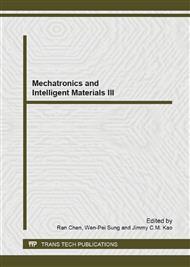p.752
p.757
p.762
p.765
p.771
p.776
p.781
p.785
p.789
Development of Synchronized Biomechanics Sensors Detection Software
Abstract:
Biomechanics is a relatively new discipline where engineering and mechanics principles are applied to the understanding of biological organism. Biomechanics simply taking place to study the mechanics of tissues, joints, human movements, circulatory system and digestive tract. One of the most challenging applications of biomechanics is in the field of sports and sports medicine in which the prevention of sports injuries is highly required. To understand and to diagnosis tissues abnormalities, mechanics of neuromuscular control, mechanics of cardiovascular function, a synchronizing interface with multi biomechanics sensors is developed in this effort. The interface shows different data recorded from several sensors during a physical activity made by the subject. These synchronized and combined data will help the user to make a specific diagnosis of the subject health. Moreover, these data will give an insight understanding on the correlation between variety aspects of biomechanics.
Info:
Periodical:
Pages:
771-775
Citation:
Online since:
June 2013
Authors:
Price:
Сopyright:
© 2013 Trans Tech Publications Ltd. All Rights Reserved
Share:
Citation:


